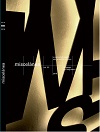Fool for Love y la estirpe de fantaseadores del teatro de Sam Shepard
DOI:
https://doi.org/10.26754/ojs_misc/mj.20166880Palabras clave:
Sam Shepard, imaginación, incesto, masculinidad, Fool for LoveResumen
Fool for Love (1983), una de las obras más conocidas y más representadas internacionalmente del repertorio shepardiano, dramatiza la controvertida relación sentimental entre May y Eddie. El siguiente artículo indaga en cómo se articula escénica y narrativamente la imposibilidad de su amor a través de la figura paterna de ambos, el personaje del Old Man, el Viejo, suspendido entre la imaginación y la realidad. Las implicaciones de la aparición del Viejo en escena para definir a su hijo como un fantaseador y el discurso en torno a la imaginación son analizados en relación a su convergencia con otros tropos que ya habían aparecido previamente en las obras familiares de Shepard Curse of the Starving Class (1977) y Buried Child (1978): la maldición de una herencia genética masculina, la repetición patriarcal y el incesto. El análisis, conducente a la identificación de toda una estirpe de fantaseadores, permite vislumbrar cómo el dramaturgo estadounidense, cuya obra dramática había explorado durante dos décadas la pluralidad, diversidad y labilidad de la actividad imaginativa en escena, exploraría a través de estos personajes la vertiente más nociva del potencial ilusorio de la imaginación.
Descargas
Referencias
Andrews, Molly. 2014. Narrative Imagination and Everyday Life. Oxford: Oxford U.P.
Bachelard, Gaston. (1943). 1958. El aire y los sueños: ensayo sobre la imaginación y el movimiento. Trad. E. Champourcin. México, D.F.: Fondo de cultura económica.
Billington, Michael. 2010. “Fool for Love: Theatre Review” The Guardian (29 January). <http://www.guardian.co.uk/stage/2010/jan/29/fool-forlove-review>. Accessed February 12, 2015.
Bottoms, Stephen. 1998. The Theatre of Sam Shepard: States of Crisis. Cambridge: Cambridge U.P.
Carveth, Donald L. 1997. “The Borderline Dilemma in Paris, Texas: Psychoanalytic Approaches to Sam Shepard”. PSYART: A Hyperlink Journal for the Psychological Study of the Arts (December). <http://www.clas.ufl.edu/ipsa/journal/articles/psyart/1997_carveth01.shtml>. Accessed December 12, 2014.
DeRose, David J. 1993. Sam Shepard. New York: Twayne.
Durand, Gilbert. (1994). 2000. Lo imaginario. Prólogo de Jean-Jacques Wunenburger; trad. Carme València. Barcelona: Ediciones del Bronce.
Fay, Stephen. 1984: “Renaissance Man Rides Out of the West”. Sunday Times Magazine (26 August): 16, 19.
Fernández-Caparrós, Ana. 2014. “The World Grasped as Picture: Subjective Vision and the Embodiment of Male Gaze in Sam Shepard’s Seduced”. Journal of Contemporary Drama in English 2.2: 260-274.
Geis, Deborah. 1993. Postmodern Theatric(k)s: Monologue in Contemporary American Drama. Ann Arbor: The University of Michigan Press.
Hall, Anne C. 1993. “Speaking Without Words: the Myth of Masculine Autonomy in Sam Shepard’s Fool for Love”. In Wilcox, Leonard. (ed.): 150-167.
Hardison Londré, Felicia. 1993. “A Motel of the Mind: Fool for Love and A Lie of the Mind”. In Wilcox, Leonard. (ed.): 215-224.
Lapouja de, María Noel. 1988. Filosofía de la imaginación. México, D.F.: Siglo XXI.
Lion, John. 1984. “Rock and Roll Jesus with a Cowboy Mouth”. American Theater 1.2: 4-8.
McDonough, Carla. 1997. Staging Masculinity: Male Identity in Contemporary American Drama. Jefferson, NC: MacFarland.
McDonough, Carla. 2002. “Patriarchal Pathology from The Holy Ghostly to Silent Tongue”. In Roudané, Matthew. (ed.): 154-170.
Rank, Otto. (1912). 1991. The Incest Theme in Literature and Legend: Fundamentals of a Psychology of Literary Creation. Baltimore: The John Hopkins U.P.
Ricoeur, Paul. 1988. Hermeneútica y acción: De la hermeneútica del texto a la hermeneútica de la acción. Buenos Aires: Docencia.
Rosen, Carol. 1993. “Emotional Territory: An Interview with Sam Shepard”. Modern Drama 36.1: 1-11.
Roudané, Matthew. (ed.) 2002. The Cambridge Companion to Sam Shepard. Cambridge: Cambridge U.P.
Sepper, Dennis L. 2013. Understanding Imagination: The Reason of Images. Heidelberg, New York, London: Springer.
Shepard, Sam. 1984. Fool for Love and The Sad Lament of Pecos Bill on the Eve of Killing His Wife. London, Boston: Faber and Faber.
Shepard, Sam. 1997. Sam Shepard: Plays 2. London, Boston: Faber and Faber.
Taav, Michael. 2000. A Body Across the Map: The Father-Son Plays of Sam Shepard. New York: Peter Lang.
Vázquez Negro, Rubén. 2011. Sam Shepard: El teatro contra sí mismo. Valencia: PUV.
Wilcox, Leonard. (ed.) 1993. Rereading Shepard: Contemporary Critical Essays on the Plays of Sam Shepard. New York: St. Martin’s Press.
Descargas
Publicado
Número
Sección
Licencia

Esta obra está bajo una licencia internacional Creative Commons Atribución-NoComercial 4.0.


